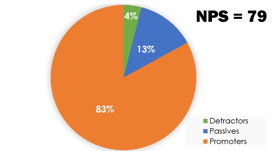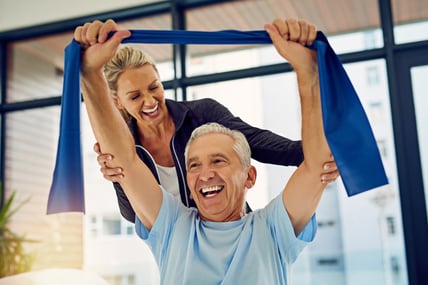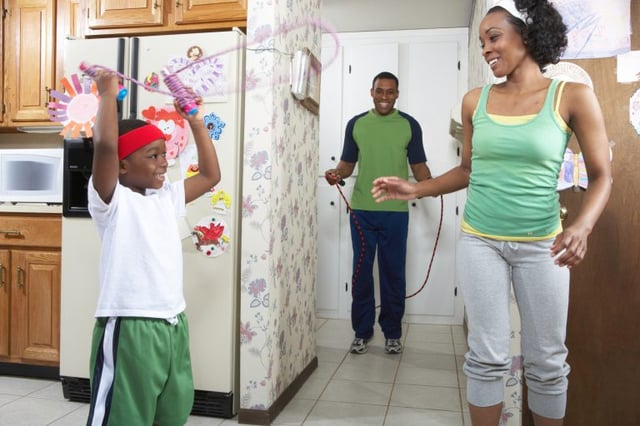 Turnover in senior living is notoriously high for a number of reasons. One of the tools leadership can use to increase tenure for employees in community settings is offering balanced and thoughtful wellness programs. What follows are suggestions for how to elevate wellness in your corporate strategy so that your workforce understands you care about them beyond the day-to-day work they provide to keep the community running.
Turnover in senior living is notoriously high for a number of reasons. One of the tools leadership can use to increase tenure for employees in community settings is offering balanced and thoughtful wellness programs. What follows are suggestions for how to elevate wellness in your corporate strategy so that your workforce understands you care about them beyond the day-to-day work they provide to keep the community running.
Employee wellness is about much more than a walking program.
How you position wellness in the organization can determine whether it sinks or swims. Physical health is only part of the picture. That's not to say you shouldn't offer a walking program. It can be a very simple way to help employees be more aware of how much they're moving during the day. But keep in mind that much of your community's staff members are on their feet most of the day serving the residents; a walking program for them may feel like "one more thing to do" in an already busy, service-oriented day. And giving everyone a wearable fitness tracker doesn't always communicate a "we care about you" message, either. The CNA scraping by on $12.50 an hour might rather have a small raise than a fancy wristband.
[Read More: Why Employee Purpose Could Be the Heart of Corporate Wellness]
Consider the health challenges across your workforce.
Your administrative/leadership team will have different obstacles in achieving good health compared to what you might see for your physical plant staff and nursing aides, and the community's approach to wellness needs and what it will take to address that range. The wearable/walking program I mentioned above is a good example of a well-intentioned offering that often falls flat for hourly staff. But, if you provide compensated exercise time for employees, you might be onto something in terms of a message that truly says, "We want to make it easy for you to live well."
Be careful if you intend to use biometric screenings and health risk assessments as the pillars of your wellness program. They have become hallmarks of a good "outcomes-based" wellness program in recent years, but that title may be misplaced. If you're just getting started on a wellness program for your community employees, it could be tempting to latch onto such screening tools as the place to begin. But there are challenges with these offerings that should not be glossed over.
Also keep in mind how important social determinants of health are for your workforce. The health habits that your crew practice at work are only part of the picture of how well they live. Where employees live can have a profound effect on their well-being. Access to healthy foods, reliable and convenient transportation, safe living environments, cultural norms and other issues have a strong influence for all of us on how they engage with healthy choices, and your workplace wellness program may be butting heads with those strong social factors. Maintaining realistic expectations about the ways your workforce can engage at work will help set your program on the right path.
Align your wellness strategy with the rest of your business strategy.
If your organization is already built on a model of caring for employees, infusing a message that you want to help employees live well should resonate positively. But if employees feel that the culture is punitive and as if their every move is being watched, "wellness" is quite likely going to sound like one more management hack designed purely to cut costs. Here are some suggestions for improving retention through a supportive relationship-based approach. You'll need to get the overarching company culture in place first before you add in a wellness component if you want your message about employee health to resonate with the staff.
Where to look next.
If you're more confused than ever about how to get an employee-centered wellness program off the ground for your workforce, you're not alone. The variable shifts, the wide range in roles (many of which are quite physical in nature), and the simultaneously gratifying and exhausting nature of the work you do, complicate how to both establish and deliver a wellness message and programming. Here are a few suggestions to help you get started:
- If you don't know what makes your employees tick, start by getting to know them a little better. They may have interests they could share with colleagues that would buoy the whole department or organization.
- Connect with employees working in a variety of settings across the community to find out what would help them feel supported to live well. You probably won't be able to execute on all of the ideas, but you will likely get suggestions you couldn't have imagined on your own.
- Start small and with the right messaging. (Hint: You can craft the right messaging when you have information from tip #1.) Always lead with words and actions that communicate a desire to help employees live well. If you say it in words and your actions don't align, employees won't engage.
- Learn from other similarly situated organizations. There are communities out there doing this work with their employees, and they can help you avoid some of the pitfalls they've already climbed out of.
It's not easy work, but don't let that stop you. Doing well for your employees helps them do right by your residents, and that's a community where everyone benefits. Need a little more information to get your wellness program started in the right direction? Check out the blog below.












.jpg?width=393&name=GettyImages-873616226%20(1).jpg) Corporate fitness centers are pretty low on the totem pole for most organizations. And that's how they end up just "existing" with the rest of the benefit items; they're on the list of nice things to have, but there's nothing about the corporate fitness program itself that tells leadership it's really thriving or performing well for the employees. If that resonates with you and what you're seeing in your worksite fitness program, it might be time to change things up.
Corporate fitness centers are pretty low on the totem pole for most organizations. And that's how they end up just "existing" with the rest of the benefit items; they're on the list of nice things to have, but there's nothing about the corporate fitness program itself that tells leadership it's really thriving or performing well for the employees. If that resonates with you and what you're seeing in your worksite fitness program, it might be time to change things up.


 Precontemplation
Precontemplation